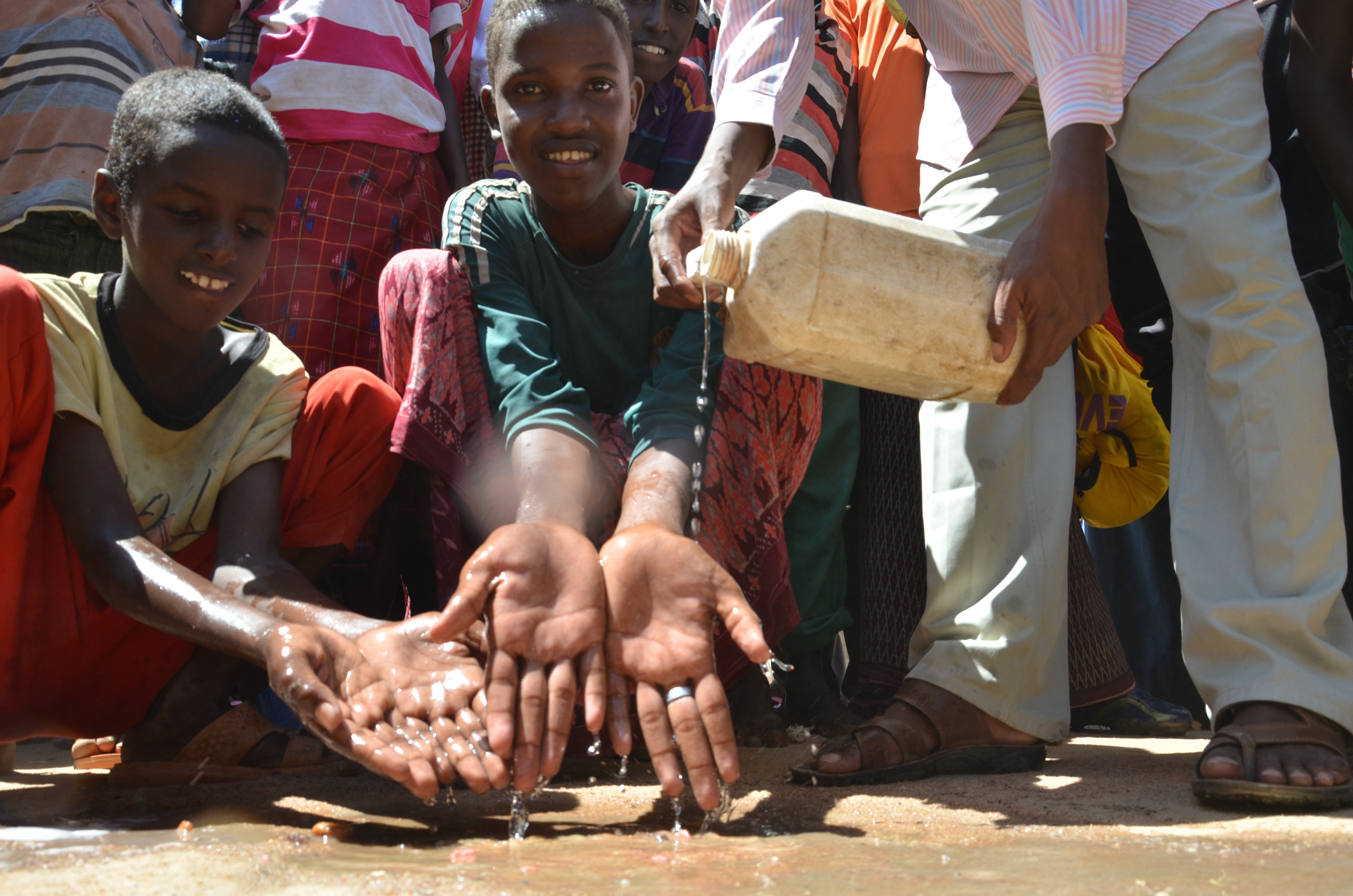Cholera epidemic claims 31 lives in Tanzania, including 29 Burundian refugees
Cholera epidemic claims 31 lives in Tanzania, including 29 Burundian refugees

UNHCR is trucking in clean water as one of the responses to the cholera outbreak in the Kagunga area of Tanzania.
GENEVA, May 22 (UNHCR) - The UN refugee on Friday reported that a cholera epidemic this week in Tanzania's lakeside Kagunga area has killed two local people and 29 Burundian refugees, adding to the serious challenges created by the forced population displacement from Burundi.
UNHCR spokesman Arian Edwards, speaking to journalists in Geneva, said the epidemic had "become a new, worrying, and growing additional complication" at a time when thousands of Burundians had fled to neighbouring countries to escape violence linked to the coming presidential election.
"The deaths have been in the port town of Kigoma on Lake Tanganyika, in the nearby villages of Kagunga and Nyarugusu, and among people being transported by ferry from Kagunga to Kigoma," Edwards said. "To date some 3,000 cases have been reported, and numbers are increasing at 300-400 new cases per day, particularly in Kagunga and nearby areas. At this rate, further cases can be expected over the next days and until the situation can be brought under control," he added.
The spokesman said preventive water and sanitation measures were essential, and the first two days of treatment were especially important, to rehydrate people.
Cholera is transmitted through drinking contaminated water. The overcrowded and unsanitary situation in Kagunga, a remote lakeside village with limited sanitation, and consumption of water from the lake is believed to be the cause. Parts of the area are cholera endemic.
UNHCR is working with the Ministry of Health and leading a team response to the outbreak with UN and NGO partners, providing emergency health, water and sanitation measures. These include additional supplies of safe water, and airlifting medicines, medical supplies, protective gear, water supply equipment and other items and supplies for the refugees and for government health facilities.
Affected refugees are being treated at newly established treatment centres run by the International Rescue Committee in Kagunga and Kigoma and by the Tanzanian Red Cross Society in Nyaragusu refugee camp. A Médecins Sans Frontières team is working to expand the capacity of the centres. "Together with the government and our UN and NGO partners, we are providing oral rehydration solutions, soap and water purification tablets, and increasing hand-washing facilities," Edwards said.
In the cholera treatment centre at Kigoma stadium, hundreds of people have been treated for diarrhoea, including three-year-old Claude who was brought in by his father, Oldasi Ndiyokilu, after a five-hour walk from Burundi.
"He was vomiting and had [acute] diarrhoea. The doctor said he . . . needed rehydration fluid. The child's situation has improved," the father said. "When he was admitted, he could not see. Now he can tell what he needs, using body language."
UNHCR has also supported the transport of more than 15,000 people from Kagunga to Nyagurusu refugee camp in Kasulu, primarily by ship and then bus. In Kagunga, refugees have now access to eight litres of clean water per day and 94 latrines have been installed.
"Our priority is to get all the refugees out of Kagunga because the situation is dire," said Kahindo Maina, a senior UNHCR public health officer. "We have built latrines and brought supplies to provide clean water but the terrain and the crowded situation does not allow for a good sanitary situation there." He said UNHCR was prioritizing the transfer of sick refugees to Kigoma and then Nyaragusu refugee camp, "where we have better facilities in terms of health, water and sanitation and shelter."
Public health messages are being used to emphasize hygiene promotion. This is being done with the help of community leaders and volunteers, and at water distribution points. The same measures are being put in place for the local community. In addition, UNHCR is decontaminating ships, buses and vehicles ferrying refugees. Hand washing stations have been established on the ships.
More than 64,000 Burundian refugees have fled to Tanzania since the beginning of May. The majority have arrived on the Kagunga peninsula, which is flanked by a mountain range on the Tanzanian side. Including this total, there are now around 100,000 Burundian refugees in Tanzania, Rwanda, Uganda and the Democratic Republic of the Congo.
With fears that the number of refugees could double over the next six months, UNHCR and 17 partners are today unveiling a Regional Refugee Response Plan that seeks US$207 million to protect and assist up to 200,000 Burundian refugees in these countries.
See UNHCR's Press Release on funding appeal and the Burundi Regional Refugee Response Plan April - September 2015








